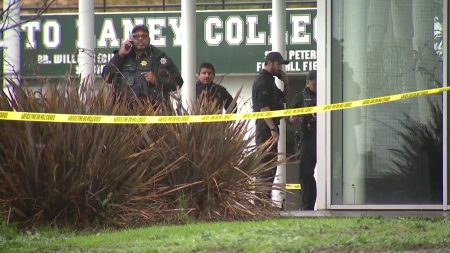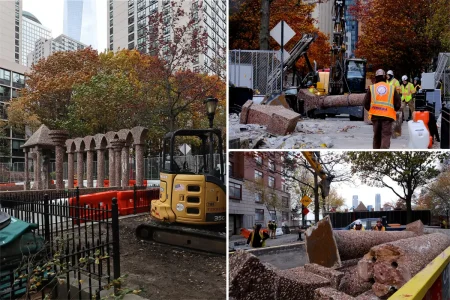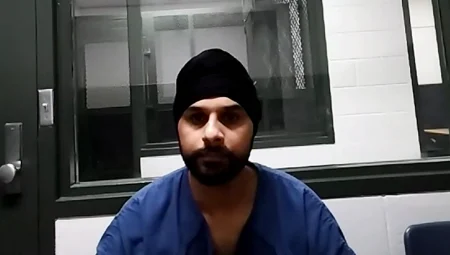Court Orders Release of Over 600 Immigrants, Sparking Controversy
In a landmark ruling that has ignited fierce debate across the political spectrum, a federal judge in Chicago has mandated the release of more than 600 immigrants detained at the Broadview ICE facility. U.S. District Judge Jeffrey Cummings issued the order after finding that the Department of Homeland Security (DHS) had committed “repeated, material violations” of a 2021 court-approved consent decree that established clear limitations on immigrant detention. The judge’s decision requires that these individuals be released “on bond and into ICE’s Alternatives to Detention program” by November 21, marking what could become the largest single-day release of ICE detainees in Illinois in years. The ruling specifically addresses those immigrants who were not subject to mandatory detention or final removal orders, yet were being held in custody nonetheless.
The case, formally known as Margarito Castañon Nava v. DHS, originated as a class-action lawsuit alleging that federal agents had unlawfully detained hundreds of migrants in direct violation of the Biden-era decree that the Trump administration had inherited. Judge Cummings didn’t mince words in his assessment of the situation, describing the conditions at the detention facility as “unsafe and unsanitary” with detainees reportedly kept in overcrowded spaces “next to overflowing toilets.” His ruling particularly criticized what he characterized as a “180-degree change” in the department’s interpretation of detention authority, suggesting an abrupt and legally questionable reversal in policy. Many of those affected by the ruling were arrested during “Operation Midway Blitz,” an enforcement sweep that immigration advocates claim caused significant trauma within immigrant communities throughout the Chicago area.
The American Civil Liberties Union of Illinois celebrated the decision as a victory for justice and accountability. Michelle Garcia, deputy legal director at the ACLU of Illinois, expressed satisfaction with the immediate release of 13 individuals who had been “wrongfully arrested and detained by federal immigration officials.” She emphasized that the potential release of more than 600 additional detainees represented “a step toward accountability for years of unlawful arrests.” This perspective frames the ruling as a necessary correction to systemic overreach in immigration enforcement, suggesting that the government had been operating outside the boundaries of its own agreed-upon legal framework. The ACLU’s position highlights the tension between strict immigration enforcement and the constitutional rights afforded to all individuals within U.S. borders, regardless of immigration status.
On the other side of the debate, the Department of Homeland Security has responded with sharp criticism, framing the judge’s decision as a dangerous undermining of national security and law enforcement efforts. Tricia McLaughlin, assistant secretary for Public Affairs at DHS, didn’t hold back in her assessment, claiming that “activist judges, sanctuary politicians, and violent rioters have actively tried to prevent our law enforcement officers from arresting and removing the worst of the worst.” Her statement to Fox News Digital further alleged that the judge’s order was “putting the lives of Americans directly at risk” by releasing hundreds of “illegal aliens” into the community. This perspective portrays the ruling as part of a broader pattern of judicial activism that impedes legitimate immigration enforcement and potentially endangers public safety.
The ruling appears to acknowledge concerns about public safety, however, as Judge Cummings has specifically ordered DHS to identify detainees who may be considered “high public safety risks” and who could potentially remain in custody despite the general release order. This nuanced approach suggests an attempt to balance humanitarian concerns with legitimate public safety considerations, though critics might argue that such determinations are best left to immigration enforcement professionals rather than the courts. The judge has also mandated that DHS file a compliance report by November 24, creating an accountability mechanism to ensure that the department adheres to the court’s directives. This requirement underscores the adversarial relationship that has developed between the federal judiciary and immigration enforcement authorities in recent years.
The Chicago case represents a microcosm of the larger, deeply polarized national debate over immigration policy in the United States. For immigration advocates, the ruling validates long-standing concerns about the treatment of immigrants and the legal bounds of detention authority. For those who favor stricter immigration enforcement, the decision exemplifies judicial overreach that hampers legitimate national security efforts. As these hundreds of immigrants prepare for release, both sides continue to advance competing narratives about what this means for American communities and the rule of law. What remains clear is that immigration policy continues to be one of the most contentious battlegrounds in American politics, with courts increasingly finding themselves at the center of these disputes, forced to interpret and enforce the boundaries of government authority in this complex domain.











